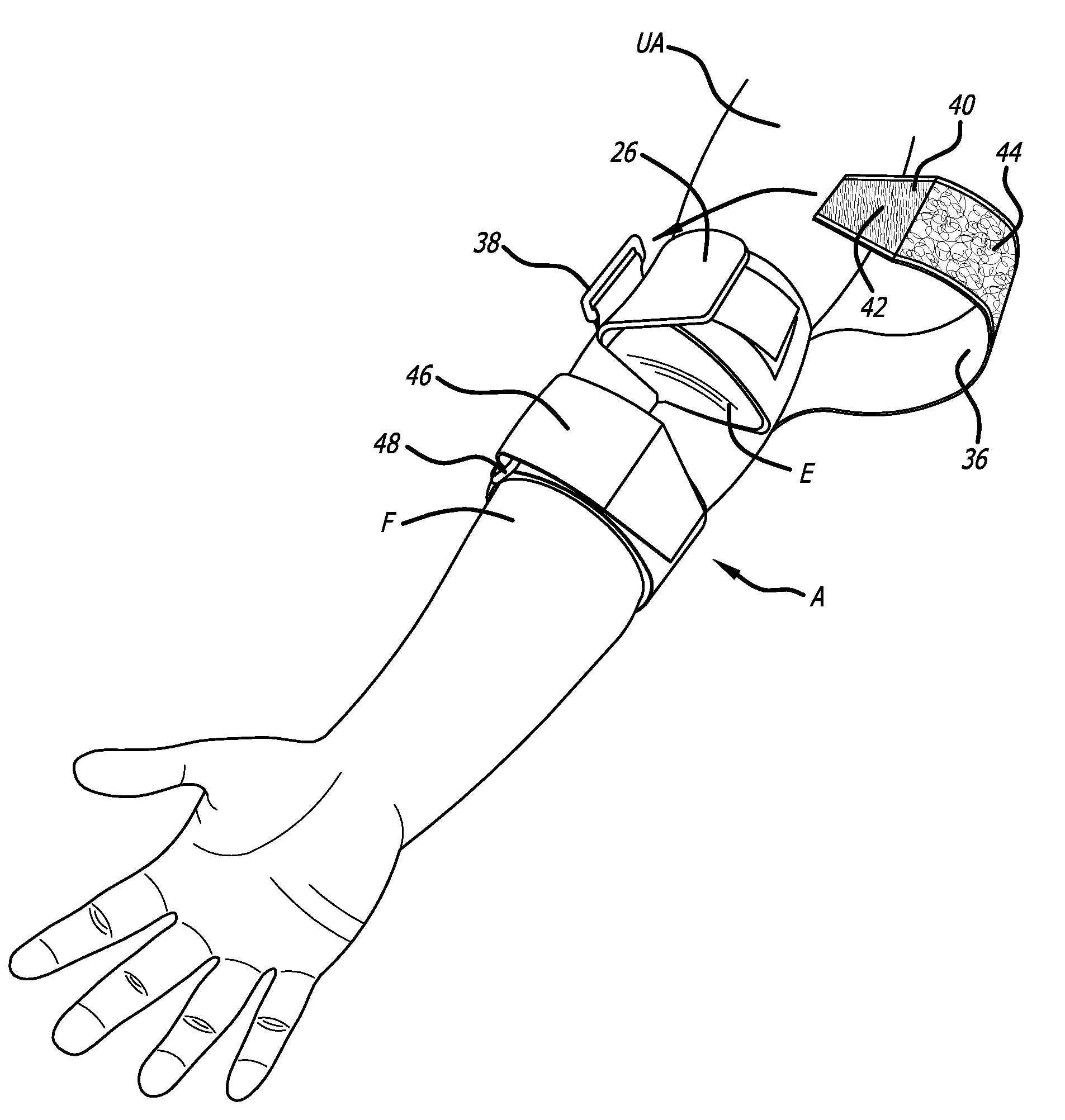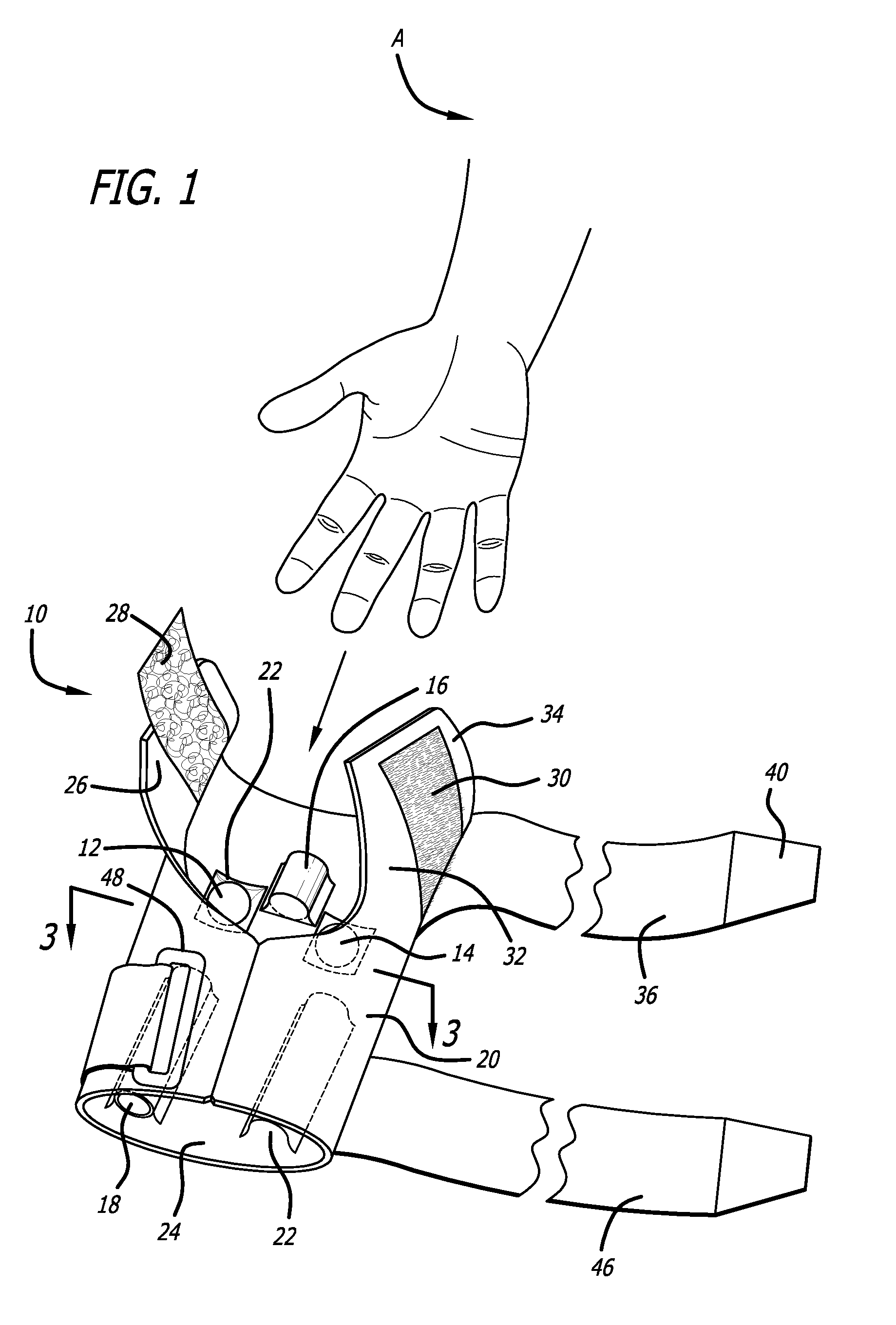Elbow brace for preventing or attenuating tennis elbow
a tennis elbow and elbow brace technology, applied in the field of elbow braces, can solve the problems of tennis elbow stretching and moving outward from the underlying bone, extreme pain, and pain that can be brought, so as to maximize the effect of elbow braces, and prevent or dissipate tennis elbow
- Summary
- Abstract
- Description
- Claims
- Application Information
AI Technical Summary
Benefits of technology
Problems solved by technology
Method used
Image
Examples
Embodiment Construction
[0022]FIGS. 1 and 2 show one particular embodiment of an elbow brace made in accordance with the present invention. In FIG. 1, the elbow brace 10 is shown as the arm A of the wearer is initially being inserted into the device. FIG. 2 shows the same elbow brace 10 fully placed on the arm of the wearer. As can be seen in FIG. 2, the elbow brace 10 covers the forearm F, elbow region E, and upper arm UA of the wearer. FIG. 1 shows in phantom lines the various elements designed to impart the pressure onto the various tendons of the arm along with the elements which provide the shock-absorbing features that absorbs a good portion of the shock energy in the elbow region E in order to reduce the inflammation of the tendons at the epicondyle.
[0023]The elbow brace 10 shown in FIG. 1 includes a first shock-absorbing element 12 which comes in contact with the arm and is placed directly over the medial epicondyle of the humerus bone. A second shock-absorbing element 14 is also located on the elb...
PUM
 Login to View More
Login to View More Abstract
Description
Claims
Application Information
 Login to View More
Login to View More - R&D
- Intellectual Property
- Life Sciences
- Materials
- Tech Scout
- Unparalleled Data Quality
- Higher Quality Content
- 60% Fewer Hallucinations
Browse by: Latest US Patents, China's latest patents, Technical Efficacy Thesaurus, Application Domain, Technology Topic, Popular Technical Reports.
© 2025 PatSnap. All rights reserved.Legal|Privacy policy|Modern Slavery Act Transparency Statement|Sitemap|About US| Contact US: help@patsnap.com



